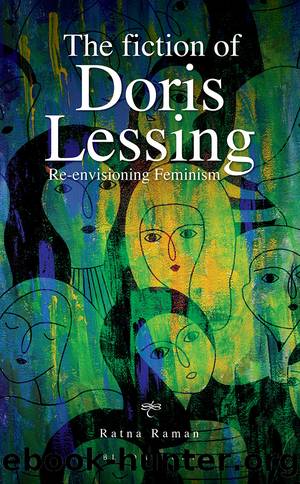The Fiction of Doris Lessing by Ratna Raman

Author:Ratna Raman
Language: eng
Format: epub
Publisher: Bloomsbury Publishing
V
Eschewing Violence: Lessingâs Feminist Formulations of the 1980s
Lessingâs fictional output after the 1960s is characterised by increasing experimentation with form, indicating her innovation with narrative techniques. Using a whole range of genres, Lessing articulates an insistent questioning of older patriarchal structures of authority and knowledge. Her earlier work revealed its critical distance from Eurocentric belief in technological progress and the making of âcomputer manâ1 and also registered how accelerating violence characterised most human activityâthe wars of conquest, territorial and national disputes, bombs, the stockpiling of weapons and the existence of nuclear arsenals being some immediate examples that come to mind.
All of Lessingâs early novels explore violence in some form or the other. However, in her work written in the 1980s, she examines in minute detail the structures of violence that have been built into contemporary social and political life. Three novels written by Lessing which focus on the issue of violence are The Marriages Between Zones Three, Four, and Five (1980),2 The Good Terrorist (1985)3 and The Wind Blows Away Our Words (1987).4 There are obvious generic differences among the three novels and the nature of political struggles charted in them is extremely diverse, yet all three texts focus on extant violence.
Marriages, the second novel in Lessingâs science fiction series Canopus in Argos, is written in the format of âfable or mythâ.5 It looks at the possibilities of growth in magical intergalactic space, in the absence of the violence and control exerted by different kinds of institutions. Although it is part of a series, Marriages also works as a self-contained unitâproviding a significant point of reference for two other novels.
The Good Terrorist, placed in a First World country, provides an acerbic critique of radical left politics in Britain in the 1980s. Written in the realist tradition, it portrays the unmitigated disaster caused due to the adoption of violence by a Left commune in contemporary London. Chronologically the last novel in this discussion, The Wind is in part a travelogueâput together after Lessingâs survey of ground realities among dissident Afghan refugees in Islamabad. Although the travelogue documents the condition of the Afghan refugeesâboth civilians and the mujahidinâactively resisting Russian invasion, Lessing begins this account by invoking an ancient myth. She invokes the legend of sisters Helen and Cassandra, the daughters born of the mating of Leda and Zeusâwhich is supposed to have ushered in the very beginnings of European civilisation.
As adult women implicated in the war by belonging to one of the tribes at war, both of them wait for Troy to be vanquished. Helen, whose elopement with Paris triggers the invasion of Troy, is shown as excitedly anticipating the thrill promised by the event, to say nothing of meeting the men fighting in the war. Her sister Cassandra, whose response is very different, shudders as she prophesies its horrors. We are made to recognise that Helen and Cassandra are also in a sense âchildren of violenceâ, as they have witnessed and been subject to incessant warfareâfrom the very moment of their conception to their adult years.
Download
This site does not store any files on its server. We only index and link to content provided by other sites. Please contact the content providers to delete copyright contents if any and email us, we'll remove relevant links or contents immediately.
The Lamplighters by Emma Stonex(1338)
Sisters by Daisy Johnson(1333)
The Burying Place (The DI Rachel Morrison series Book 1) by Vicky Jones & Claire Hackney(1289)
Remember by Lisa Genova(1180)
The Secret of You and Me by Melissa Lenhardt(1166)
Expect a Miracle by Danielle Steel(1165)
The End of Men by Christina Sweeney-Baird(1138)
The Castaways by Lucy Clarke(1043)
The Personal Librarian by Marie Benedict & Victoria Christopher Murray(887)
Seven Kinds of People You Find in Bookshops by Shaun Bythell(882)
The Liar's Dictionary by Eley Williams(877)
Everything After by Jill Santopolo(833)
The Marriage Moment by Katie Meyer(826)
The Mystery of Mrs. Christie by Marie Benedict(818)
A Family Affair by Lance Edwards(806)
The Russia House by John Le Carré(778)
The Handmaidâs Tale by Margaret Atwood(778)
ANTONIO TABUCCHI by Sostiene Pereira (Ita Libro)(764)
The Boy in the Field by Margot Livesey(760)
